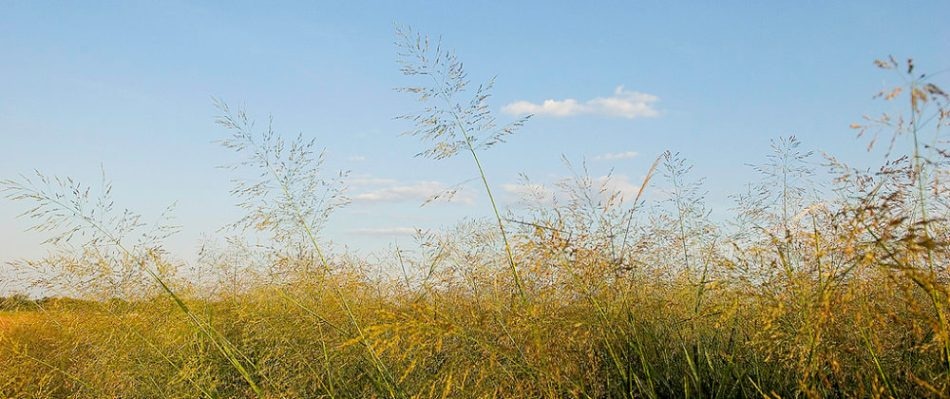Feb 27 2018
 Researchers found new promise for biofuels produced from switchgrass, a non-edible native grass that grows in many parts of North America. Photo: Noble Research Institute
Researchers found new promise for biofuels produced from switchgrass, a non-edible native grass that grows in many parts of North America. Photo: Noble Research Institute
Researchers, government agencies, and companies are striving hard to reduce the emission of greenhouse gases that result in climate change. In the recent past, biofuels synthesized from corn have become a fuel source for powering motor vehicles and maybe also airplanes.
However, the use of corn as a biofuel source material is challenging because it involves huge resources to grow, has large effects on the environment, and is more practical to use as food.
A research carried out at Colorado State University has discovered a prospective use for biofuels synthesized from switchgrass—a non-edible native grass grown in various parts of North America. Researchers adopted modeling to reproduce different growing scenarios, and discovered a climate footprint varying from -11 g to 10 g of carbon dioxide per mega-joule, which is the standard method for evaluating greenhouse gas emissions.
In comparison with other fuels, the use of gasoline leads to an effect of 94 g of carbon dioxide per mega-joule.
The research, titled “High resolution techno-ecological modeling of a bioenergy landscape to identify climate mitigation opportunities in cellulosic ethanol production,” was reported online in Nature Energy on February 19, 2018.
What we saw with switchgrass is that you’re actually storing carbon in the soil,” he stated. “You’re building up organic matter and sequestering carbon.
John Field, Research Scientist, Natural Resource Ecology Lab, CSU
The CSU research group of Field analyzes second-generation cellulosic biofuels synthesized from non-edible plant materials such as grasses. Cellulose is the stringy fiber found in plants. The grasses, including switchgrass, are prospectively more productive as crops, and when compared to corn, they can be grown with very less environmental impact.
They don’t require a lot of fertilizer or irrigation. Farmers don’t have to plow up the field every year to plant new crops, and they’re good for a decade or longer.
John Field, Research Scientist, Natural Resource Ecology Lab, CSU
The scientists selected a study site in Kansas because it has a cellulosic biofuel synthesis plant, which is one among only three plants in the United States.
The researchers used DayCent—an ecosystem modeling tool with the ability to track the plant growth, carbon cycle, and the impact of climate, weather, and other local-level factors on the growth of the plants. The tool was created at CSU in the mid-1990s and enables researchers to estimate whether crop production leads to or assists in fighting climate change, and how possible it is to grow specific crops in a specific area.
Earlier researches on cellulosic biofuels have focused on the engineering aspects of the supply chain. Such aspects include examining the distance between the farms in which the plant material is grown as well as the biofuel production plant to which it has to be transferred. Yet, the CSU investigation reveals that the aspects of where and the way the plant material is grown is just equally important or even more important for the greenhouse gas footprint of the biofuel, stated Field.
Low oil prices have rendered the biofuel industry to experience high difficulties. The synthesis plant mentioned earlier has new owners and is going through a reorganization.
However, according to Field, the prospects for biofuels and bioenergy seem to be bright.
Biofuels have some capabilities that other renewable energy sources like wind and solar power just don’t have. If and when the price of oil gets higher, we’ll see continued interest and research in biofuels, including the construction of new facilities.
John Field, Research Scientist, Natural Resource Ecology Lab, CSU
Samuel Evans (University of California-Berkeley), Ernie Marx, Mark Easter (Natural Resource Ecology Laboratory at CSU), Paul Adler (United States Department of Agriculture), Thai Dinh (University of Oklahoma), Bryan Willson (Energy Institute and Department of Mechanical Engineering, CSU), and Keith Paustian (Department of Soil and Crop Science, CSU) are the co-authors of the study.